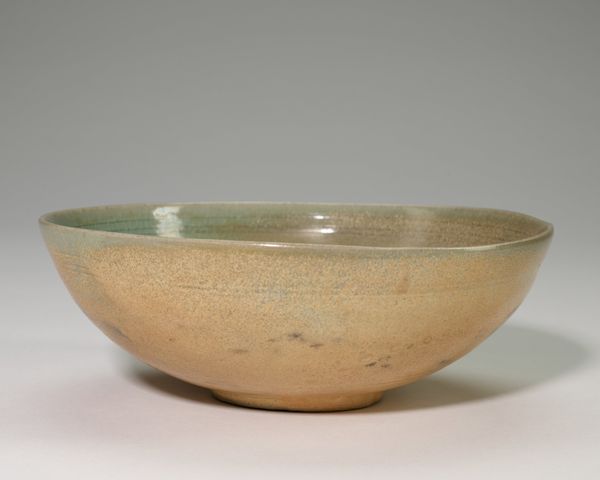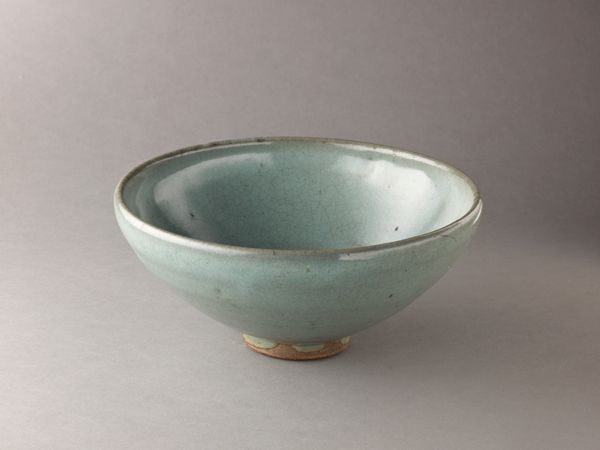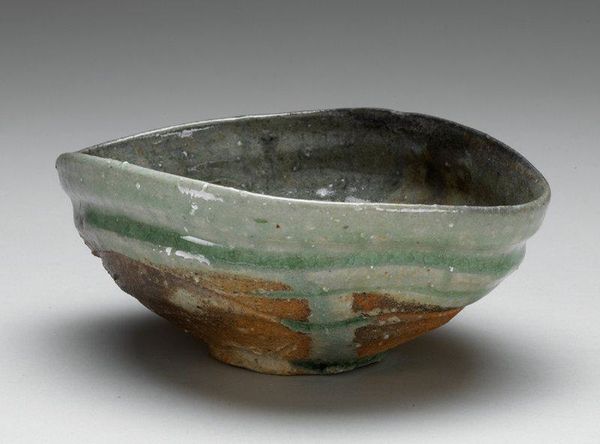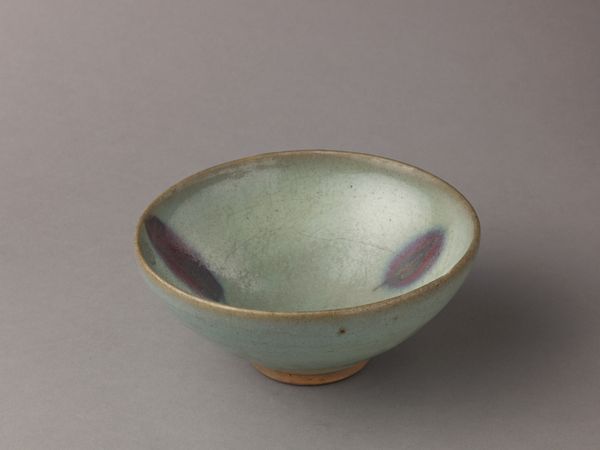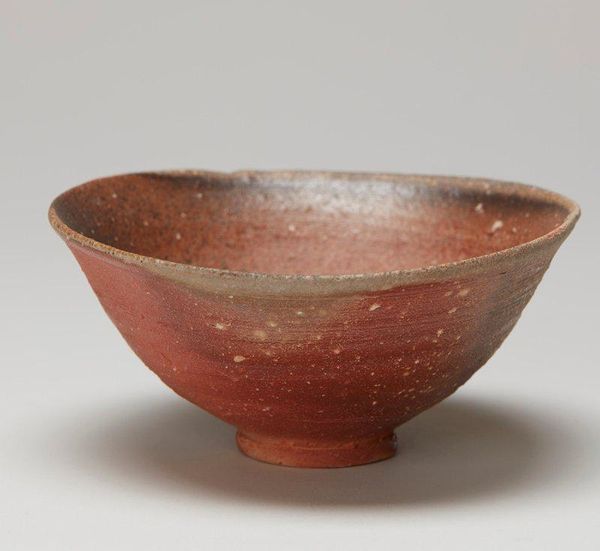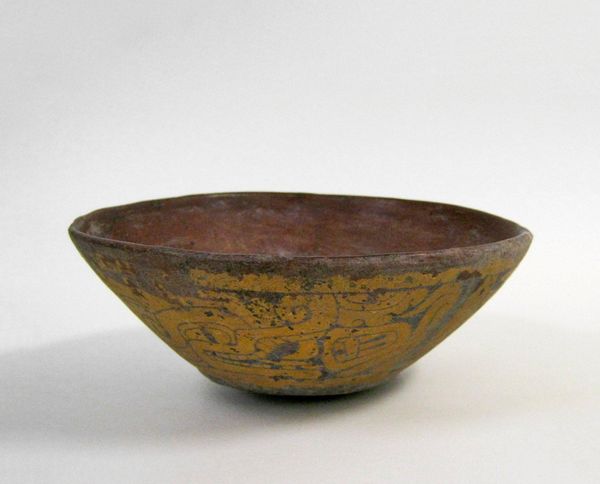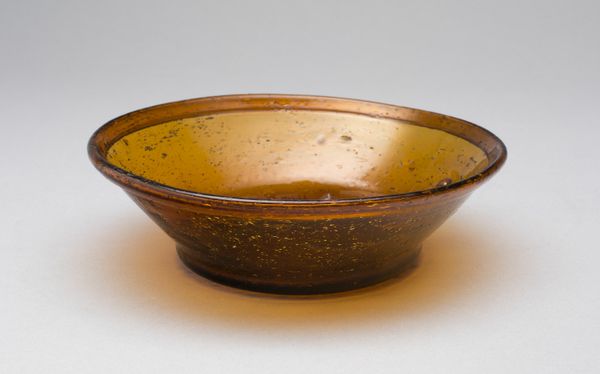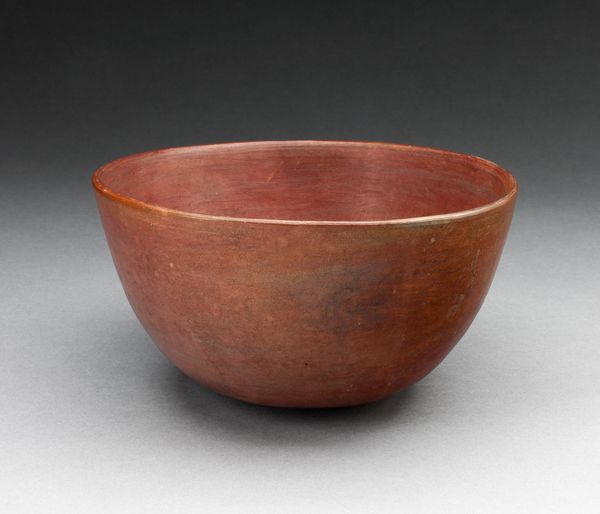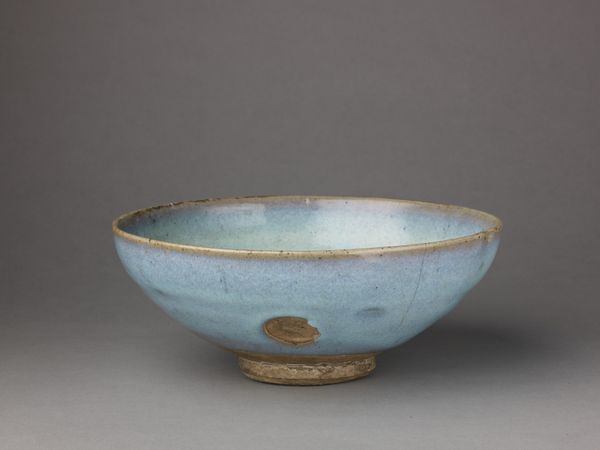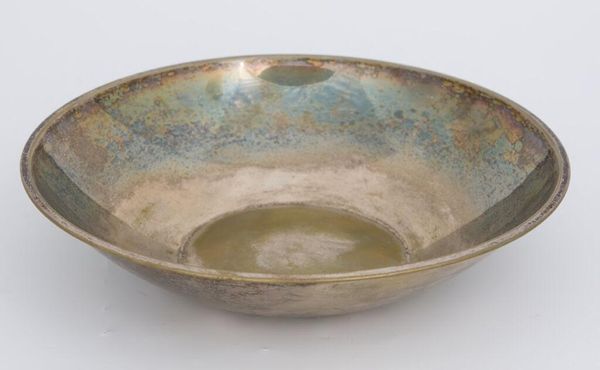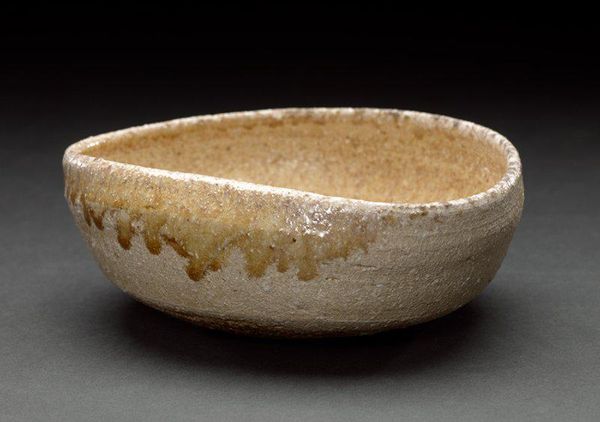
ceramic, earthenware
#
asian-art
#
ceramic
#
japan
#
earthenware
#
stoneware
Copyright: No Known Copyright
Curator: What a fascinating piece to consider. We’re looking at a ceramic Platter crafted around 1950 by Shimaoka Tatsuzo, a notable figure in Japanese ceramics. This stoneware example currently resides here at the Minneapolis Institute of Art. Editor: Immediately, the dualistic nature of the glaze arrests my eye. That celadon interior… contrasted against the speckled, earthy exterior creates a pleasing dichotomy. A tangible connection of inner serenity against a wild exterior. Curator: Interesting. Shimaoka's upbringing in a family of cord makers significantly impacted his ceramic techniques. The "Jomon Zogan" or cord-inlay, method directly references this heritage, doesn't it? Pressing cords into the clay creates these intricate textural designs that speaks of pre-industrial, Japanese craftsmanship and identity. Editor: Quite right. It's visually rewarding how the textures lead your eye around the piece's edges and ultimately invite it inward to explore the tranquil teal interior. Note also the intentional imperfection and the asymmetry throughout the design. It adds depth to its shape; it is never monotonous! Curator: Exactly. The imperfections you point out speak to Shimaoka's embrace of the folk-art movement and it challenged pre-established artistic hierarchies. Each imperfection highlights the artist’s interaction with the material, effectively embedding the process in the final work. In fact, it’s in part what drew the designation of Living National Treasure in Japan for him. Editor: What I admire most is its successful balancing act! Between refinement and the rustic, that tension really resonates. It's functional but undoubtedly pushes aesthetic boundaries of what we consider elevated ceramic arts. Curator: The social dimension becomes rather apparent, then, right? By bridging functional art, Japanese identity and global artistic dialogue, Shimaoka redefines what constitutes national and artisanal pride within a post-war world facing mass standardization. Editor: I'm so glad we had the chance to examine this piece together today. I look forward to diving deeper next time! Curator: Agreed. Each encounter reveals deeper insights into the artistry, material and historical dimensions.
Comments
minneapolisinstituteofart about 2 years ago
⋮
Shimaoka was designated a Living National Treasure by the Japanese government in 1996. He is best known for developing a pottery technique in which white clay slip is applied to rope impressions made in the surface of the pot. After the slip partially dries, the excess is scraped away, leaving the lighter slip imbedded in the rope impressions. Shimaoka calls this technique Jo_mon zogan (Jo_mon inlay) after the rope marking found on ancient pots of the Japanese prehistoric Jo_mon era (ca. 11,000-400 BCE). In evolving his technique, Shimaoka was also inspired by his father, a silk cord artisan. He commissioned his father to create differently braided ropes that resulted in unique patterns for his slip inlay.
Join the conversation
Join millions of artists and users on Artera today and experience the ultimate creative platform.
